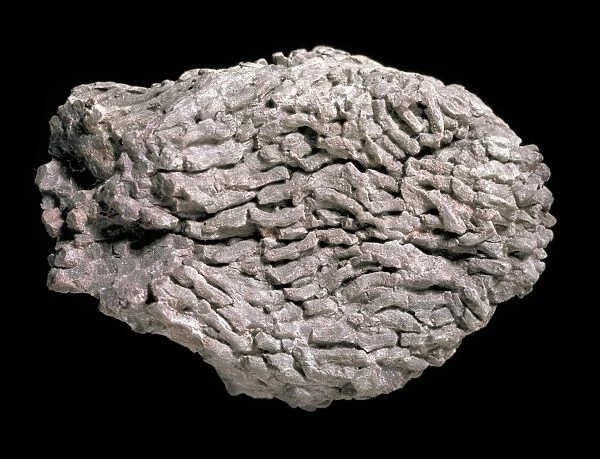Lithostrotion, coral
![]()

Wall Art and Photo Gifts from Mary Evans Picture Library
Lithostrotion, coral
Shown here is a Carboniferous coral. Corals comprise a soft bodied animal called a polyp. Each polyp inhabits a calcareous skeleton called a corallum
Mary Evans Picture Library makes available wonderful images created for people to enjoy over the centuries
Media ID 8578311
© Mary Evans Picture Library 2015 - https://copyrighthub.org/s0/hub1/creation/maryevans/MaryEvansPictureID/10703600
Anthozoa Anthozoan Calcareous Calcium Calcium Carbonate Carbonate Carbonate Mineral Carboniferous Cnidaria Cnidarian Coelenterata Coelenterate Coral Mineral Paleozoic Phanerozoic Polyp Prehistoric Invertebrata
EDITORS COMMENTS
1. Title: A Glimpse into the Past: The Carboniferous Lithostrotion Coral - Nature's Architects of Calcium Carbonate 2.. This image showcases a beautifully preserved Carboniferous Lithostrotion coral, a mesmerizing relic from the ancient world. Hailing from the Paleozoic Era, during the Phanerozoic Conioniferous, this coral is a testament to the rich diversity of life that existed over 300 million years ago. Corals, as depicted in this image, are fascinating invertebrates belonging to the Cnidaria phylum, specifically the Anthozoa class and the subclass Hexacorallia. They are characterized by their soft, tubular bodies, which house a unique structure called a polyp. Each polyp is encased within a hard, calcareous skeleton called a corallum. The Lithostrotion coral, specifically, is a type of rugose coral, known for its intricate, branching structure. Its name, Lithostrotion, is derived from the Greek words "lithos," meaning stone, and "stroton," meaning bed or layer. This name reflects the coral's distinctive calcareous structure. The mineral composition of this coral is primarily calcium carbonate, a common mineral in the carbonate rock formations of the Carboniferous period. The calcium carbonate in the corallum was formed through a process called biomineralization, where the coral secretes calcium carbonate to build its skeleton. This ancient coral serves as a reminder of the intricate and diverse ecosystems that once flourished on our planet. Its preservation allows us to study the past and gain valuable insights into the evolution of marine life. The Carboniferous Lithostrotion coral stands as a symbol of nature's architectural prowess and the enduring beauty of the natural world.
MADE IN AUSTRALIA
Safe Shipping with 30 Day Money Back Guarantee
FREE PERSONALISATION*
We are proud to offer a range of customisation features including Personalised Captions, Color Filters and Picture Zoom Tools
SECURE PAYMENTS
We happily accept a wide range of payment options so you can pay for the things you need in the way that is most convenient for you
* Options may vary by product and licensing agreement. Zoomed Pictures can be adjusted in the Cart.



